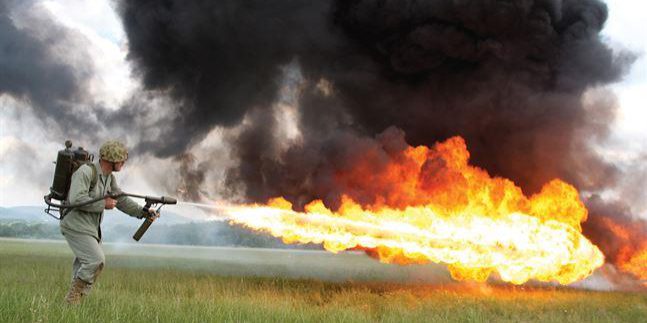Customer: U.S. Marine Corps Joint Project Manager for Protection (JPM-P)
Challenge: The JPM-P is responsible for fielding chemical agent hazard mitigation equipment, developing state-of-the-art terrain chemical agent decontamination technologies, and investigating and analyzing the efficacy of historic decontamination methodologies. Specifically, JPM-P is analyzing and assessing the U.S. Department of Defense’s (DoD’s) precedent for flamethrower use in the decontamination of chemical warfare agents.
Approach: HDIAC analyzed DoD capabilities and precedents regarding the efficacy of flamethrowers for chemical agent decontamination. HDIAC determined this method of decontamination ineffective, as flamethrower fuel burns too quickly to penetrate porous contaminated surfaces (i.e., concrete, sand, soil, etc.). HDIAC’s analysis highlighted effective and alternative decontamination methodologies within the DoD.
Value: HDIAC saved JPM-P considerable resources, including future research and development expenditures, by providing information regarding the efficacy of flamethrower use in chemical agent decontamination. HDIAC’s cost-effective research will be integral in JPM-P’s development of novel terrain decontamination capabilities for the U.S. Warfighter.


